Hyundai’s i30N has been enhanced with a new design focused on performance, emotion and statement, and for the first time, the upgraded Hyundai i30N will be available with N DCT – an eight-speed dual-clutch transmission which offers paddle shifters and enables three new N performance functions for an even sportier driving experience.
New 19-inch forged alloy wheels further reduce the weight, resulting in more agile handling of the i30, while additional high-performance driving features combined with updated safety makes the new i30 N a racetrack capable everyday sports car.
The i30 N was originally developed on the basis of the three N cornerstones: Corner Rascal, Everyday Sports Car and Racetrack Capability. The i30 N stands for “Fun to Drive” and was developed to make the driver’s heartbeat faster when he or she gets behind the wheel. While the i30 N is always ready to be transformed at the push of a button for racetrack driving on the weekend, it is truly an everyday sports car that is suitable for daily commuting in comfort on weekdays.
Instead of focusing on pure numbers, Hyundai Motor has chosen to emphasise driving pleasure and the emotional impact on the driver’s heartbeats per minute (BPM), rather than simply measuring revs per minute (RPM). Several high-performance driving features and a performance-oriented instrument cluster contribute to an all-around sporty experience.
Follow Double Apex on Facebook and Instagram, where we share more car content.
Born in Namyang, honed at the Nürburgring

Hyundai ‘N’ stands for Namyang, Hyundai Motor’s global R&D Centre in Korea (pictured), where the idea was born, and for the Nürburgring, home to Hyundai Motor’s European Test Centre, where the N line-up was further developed and tested.
The close connection between Namyang and Nürburgring created the foundation for N, the goal being to deliver driving enjoyment. Symbolising a chicane, the ‘N’ logo embodies this aspect – an agile vehicle that is fun to drive – and represents the ultimate driving experience on winding roads.
The Nürburgring Nordschleife was and continues to be used to hone the N-model’s high-performance technologies. The iconic Nürburgring racetrack is known as one of the world’s most challenging racetracks. With 73 corners and 20,8 km of tarmac, it is also a motorsport complex and home to Hyundai Motor’s own testing centre, operated by the Hyundai Motor Europe Technical Centre
The original Hyundai i30N underwent extensive testing for racetrack performance and durability. During its development phase, a prototype of the i30 N underwent 10 000 km of driving on the Nordschleife at the Nürburgring circuit for durability testing.
Each component used in the i30 N makes Hyundai Motor’s first high-performance vehicle more agile and dynamic. This is what the Hyundai N line up stands for: the N-badged Hyundai focuses on taking the vehicle beyond its role of being just a means of transportation. It offers the customer the thrill and excitement of driving a high-performance car and becoming one with the car as it moves through corners at speed.
Click here, or the advert below, to view the latest deals from Hyundai South Africa.
Focused on Fun to Drive
The design is based on true high-performance vehicles and includes Hyundai’s cascading grille at the front, aggressive-looking front and rear bumpers, and a new rear spoiler. According to the principle “form follows function”, the car design enhances aerodynamic and cooling performance. Its operation focuses on the pure connection between the car and the driver. Now, the design has been enhanced to give the new i30 N an even more racetrack-inspired look and improve aerodynamics.
Read about the Kona N by clicking this link.
Corner Rascal
The i30 N loves corners. The N logo symbolises a chicane, the ultimate part of the track where the i30 N achieves maximum traction, precision and feeling. The powerful 2.0-litre turbocharged engine delivers up to 206 kW and 392 Nm torque.
The i30 N is aerodynamically designed to reduce lift. This keeps the body firmly on to the road when maximum traction is required. The N Corner Carving Differential, an Electronic Limited Slip Differential (eLSD), enhances grip and improves maximum cornering speed. For the real enthusiasts, the Electronic Stability Control (ESC) can be switched off completely for maximum freedom.
Exterior design
The design of the Upgraded Hyundai i30N, which is produced at Hyundai Motor Manufacturing Czech in Nošovice (HMMC) in the Czech Republic, can be described in three words: performance, emotion, statement. Beyond a styling exercise, the changes made exclusively for the i30 N define its performance. To create the best ratio between the new i30 N’s downforce, drag and aerodynamics for the best possible driving experience, the designers worked in accordance with aerodynamic principles. Every design feature around the car has been developed with a focus on dynamic performance.

At the front, the i30 N maintains its sporty, aggressive appearance through the black bezel of the headlamps. New to this model are enhanced LED headlamps with V-shaped Daytime Running Lights (DRLs) and V-shaped LED combi lamps at the rear. The N signature can be found on the wide centre grille. Its specific, sharp mesh design reminds the viewer of airplane wings and has been optimised to allow efficient engine cooling.
As the front bumper features the prominent cascading grille, particularly stressed through the red insert, the emotional appearance and strong character of the car are once again highlighted. Fresh air inlets on both sides of the car’s front bumper enhance the brake cooling and aerodynamics. Behind the unique cascading grille, additional air curtains offer further performance by enhancing air flow, reducing turbulence in the wheel housing and cooling the engine more effectively.
The front splitter and the rear wing spoiler create downforce and an excellent aero balance. Meanwhile, the outer bumper corners, dominated by the typical aerodynamic side fins, incorporate the air curtains to significantly improve the airflow.
Lighter alloys

The i30 N’s Performance Package include newly developed 19-inch forged alloy wheels. The lightweight, optimised, five-double-spoke wheels were designed for minimum unsprung mass and high strength. The new i30 N is the first Hyundai mass production car to come with 19-inch forged wheels.
Together, they are 14,4 kg lighter than the previous 19-inch casted alloy wheels. Their dark satin grey matte finish, contrasting with the N specific red brake callipers with the N logo, underlines the racing spirit of the car. The new i30 N has also been outfitted with high-performance Pirelli P-Zero ultra high-performance Hyundai N tyres. These were developed especially for the i30 N and feature an “HN” mark, which stands for “Hyundai N”, on the rims. The N logo has also been integrated onto the wheel caps.
A triangular third brake light in the glossy black spoiler at the updated rear underline the eye-catching look. It additionally features an updated rear end design with a large wing spoiler with a distinctive N triangular brake light. The spoiler creates downforce and excellent balance, while the rear lamps have also been updated and feature a new LED signature.
Two large exhaust pipes integrated into the lower bumper diffuser complete the image of the pure high-performance i30 N. The new i30 Fastback N, on the other hand, comes with a discrete glossy black spoiler, while the triangular rear fog light is integrated into the middle of the rear bumper.
The new i30 N comes in five exterior colours, including Performance Blue, which is exclusive to Hyundai N models. Because of Hyundai Motor’s motorsport heritage, the unique Performance Blue colouring reflecting the wide-open sky was introduced with the start of its WRC engagement in 2014 and has represented the N line-up ever since. The other exterior colours are Atlas White; Engine Red; Dark Knight; and Phantom Black.
Interior design
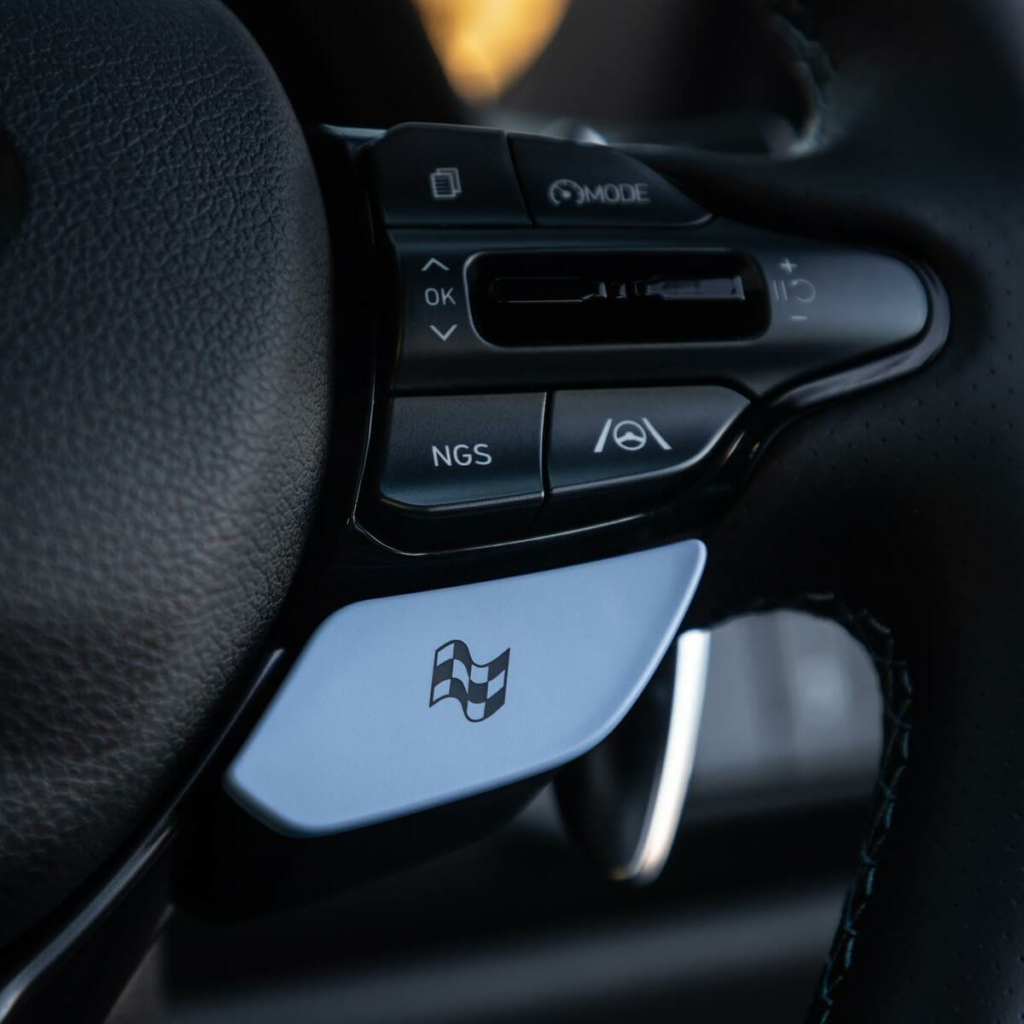
The interior of the upgraded Hyundai i30N is focused on connecting the driver with the car at all touch points. The concept is dedicated to the people who truly love cars. The exclusive “N” steering wheel ensures that the driver is in 100% control of all driving performance features directly by hand. On the left side of the steering wheel, drivers can select three standard drive modes: Normal, Sport and Eco. On the right, the driver has direct access to the chequered flag N button for the N mode, or the customised setting which is visible on the N unique cluster.
For better engine control during gear shifting, drivers can activate the Rev matching control system by using the dedicated rev activation button just above the N button. The steering wheel is manufactured with the N unique blue stitching and garnished with an N logo at the bottom. The gear shift also features a unique blue stripe as part of the coherent colour design. On top, the ball-type knob bears the N badge.
The analogue cluster includes features such as the active variable LED red zone, which varies according to engine oil temperature, and the shift timing indicator, which shows the driver the best time to switch gears. Both the rev-counter and the speedometer are distinctively designed in accordance with the N line-up, being surrounded by a blue lightning line. The new i30 N is also equipped with a heated steering wheel and heated front seats.
The Upgraded Hyundai i30N features sporty, metal pedals and Performance Blue stitching. The interior comes in one-tone Black with artificial suede and leather seats.
Powertrain
The upgraded Hyundai i30N is powered by a four-cylinder 2.0-litre turbocharged petrol engine with front-wheel drive and an eight-speed dual clutch transmission (N DCT). The engine delivers 206 kW in the upgraded i30 N, and maximum torque has been increased by 39 N.m to 392 N.m.
The turbocharged engine offers flat power, which ensures high responsiveness and improved acceleration for even more fun on the road or on the racetrack. Flat power provides more torque and power at lower RPMs, thus using more of the engine’s potential in everyday driving. The new i30 N keeps maximum torque between 1 950 and 4 600 r/min. and achieves maximum power at 5 200 r/min. This improves acceleration in the mid- and high-speed range and delivers a consistently high performance even in a variety of ambient conditions.
The maximum speed of the i30 N is 250 km/h, and it can go from 0 to 100 km/h in 5,4 seconds (with Launch Control), an improvement of 0,2 seconds or 3 per cent as compared to the previous model.
N DCT
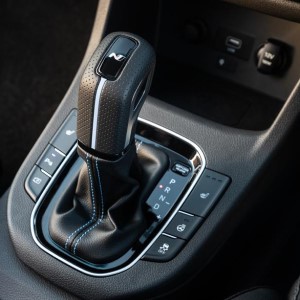
The new N DCT eight-speed dual clutch transmission enables a range of high-performance driving features, making the new i30 N even more fun to drive. Unlike a typical dual-clutch transmission, which runs without oil or is “dry,” the wet-type N DCT uses two electrical oil pumps to reduce the amount of friction between the moving parts and for a better cooling of the clutch, thus allowing a higher amount of torque to transfer through the gearbox.
The new transmission option with two separate clutches was designed in-house to provide the engaging experience of a sequential gearbox with the convenience of an automatic transmission. Inspired by motorsport, N DCT delivers the most shifting fun in its class.
The benefits are threefold: increased maximum torque allowance results in improved performance, increased power transmission and acceleration make the vehicle more fun to drive, and fuel efficiency is improved.
With N DCT, drivers can choose to enter a proper manual mode and shift gears either by using the paddle shifters on the steering wheel or the gear stick. In this mode, the car does not automatically upshift at the highest RPM. The paddle shifters allow the driver to shift gears without taking their hands off the steering wheel for an even sportier experience. If the driver decides to use the gear lever instead, the gear lever comes with sporty shifting logic: to downshift, push forward, and to upshift, pull back.
i30 N puts a grin on your face
For the first time with i30 N, the N DCT enables three new N performance functions for an even sportier experience: N Power Shift, N Grin Shift, and N Track Sense Shift.
N Power Shift (NPS) engages when the car accelerates with more than 90% of throttle, thereby mitigating any reduction in torque during upshifts to deliver maximum power to the wheels. This enhances fun to drive by giving a “push feel” when upshifting. The accompanying bang sound coming from the partial cylinder cut underlines the sporty performance.
N Grin Shift (NGS) maximises engine and DCT performance for 20 seconds. In order to get maximum acceleration, the car will shift down to the lowest available gear – performance that is sure to bring a grin to the driver’s face. To activate, the driver pushes a dedicated button on the steering wheel, and a countdown begins on the cluster showing the remaining seconds for this function. After the “boost” has ended, drivers must wait at least 40 seconds to use it again. This feature allows the driver to use the full potential of the car with only one button. During daily driving it can be utilised when passing or merging on a highway.
Finally, N Track Sense Shift (NTS) optimises adaptive shift for racetrack driving helping the driver to focus more on the steering. It automatically recognises when the conditions are optimal for dynamic driving on a racetrack and activates automatically. Based on motorsport data combined with the driver’s behaviour, the car selects the right gear and shift timing in sport driving conditions to provide optimal performance, just like a professional race car driver.
N Grin Control System
As with the first generation i30 N, the N Grin Control System gives customers the choice between five distinct drive modes: Eco, Normal, Sport, N and Custom. The drive modes change the character of the N by adjusting the operating parameters of the engine, Electronic Stability Control (ESC), exhaust sound and steering in order to optimise them for a variety of driving conditions. In Custom mode, drivers are free to customise the parameters to match their driving preferences and the road conditions. This is done via a “Spider diagram” on the Audio Video Navigation (AVN) screen.
Creep Off mode
Unlike with a traditional automatic transmission vehicle, the i30 N driver can choose to turn off the creep function to prevent the car from automatically rolling forward when the brake pedal is released. Depending on the driver, this is a comfort and convenience feature which can also be useful at the racetrack. Creep Off mode can be activated or deactivated via the AVN screen.
Electronic Sound Generator (ESG)
To provide the inside of the i30 N with a real high-performance experience, the sporty engine sound from the exhaust and intake noise of the car is supported by the Electronic Sound Generator in the body panel. In the cabin, an engine sound generator provides some extra acoustic drama to match the mood of the driver. ESG uses the windshield to transfer the sound into the car. Variable muffler control also contributes to the perfect exhaust sound. For the upgraded Hyundai i30N, ESG has been re-tuned to provide the perfect driving experience.
Launch Control
Launch Control boosts the car to its maximum power immediately upon launch. It can be activated in N mode with the Electronic Stability Control (ESC) switched off or in Sport mode. Launch Control regulates the amount of engine torque when starting from standstill, helping to launch the i30N like a professional race driver with maximum traction and minimal wheel spin.
Rev matching
Rev matching automatically adjusts the revs of the engine when the driver shifts from a higher to a lower gear. Consequently, it allows smoother and sportier downshifts, depending on the drive mode. Rev Matching can also be easily switched on manually via a button located on the right side of the steering wheel.
Ride and Handling
With the upgraded Hyundai i30N, suspension and steering systems have been re-tuned, resulting in improved ride and handling performance for both transmission types. The new suspension settings include a -1,5-degree negative camber, new dampers, new springs, new bump-stops, and an adjusted kinematic layout. The weight saved through the 19-inch forged alloy wheels results in better performance and handling for a more agile driving experience. Furthermore, the front brake disc size has been increased from 345 mm to 360mm for an even better braking performance.
Electronic Controlled Suspension (ECS)
By controlling the damping force, ride and handling as well as stability are enhanced. Depending on the driving conditions, from daily trips to racetrack driving, the vehicle’s performance can be adjusted. The use of a solenoid valve guarantees a precise and immediate damping force control. It allows the driver to influence the stiffness of the suspension with the push of a button.
Electronic Stability Control (ESC)
The Electronic Stability Control (ESC) system stabilises the vehicle during cornering manoeuvres. For even sportier pleasure of driving, the Electronic Stability Control (ESC) can be operated in three stages: Normal, Sport, and off. When on, the system is optimised for daily driving, yet still allows for driving fun. Sport is optimised for dynamic driving and allowing for some slip-angle, or drivers can turn it fully off for the maximum racetrack feeling.
N Corner Carving Differential
The strong cornering ability of i30N is achieved by different performance features, such as the N Corner Carving Differential, a type of Electronically Controlled Limited Slip Differential (eLSD). N Corner Carving Differential is designed and engineered to provide a unique carving feel through even the most challenging corners. It allows driven wheels to turn at different speeds by applying different amounts of torque depending on the load transfer from the outer to the inner front axle wheel.
Wheel slip in specific conditions is reduced and understeering on cornering minimised. N Corner Carving Differential enhances grip, increases the maximum cornering speed and driving fun through corners by delivering maximum power to the road.
Rack-mounted Motor Driven Power Steering system (R-MDPS)
Hyundai N models offer a new level of precision and responsiveness in its steering, delivering great value to the driver: their Rack-mounted Motor Driven Power Steering system (R-MDPS) provides stability to the vehicle at high speeds and makes the car instantly responsive at lower speeds. While being integrated into the steering rack, the electric motor provides extremely direct feedback to the driver.
Safety
Two front and two side airbags for the driver and front passenger and curtain airbags extending to the rear seats form part of the passive safety features. The i30 is also equipped with an additional knee airbag for the driver. The front 3-point inertia reel safety belts have pretensioners. All rear seats have 3-point safety belts, and ISOFIX child seat anchoring points on the outer seats.
Tech and connectivity
The upgraded Hyundai i30N offers state-of-the-art connectivity. To empower the driver to become better with every ride, it features a Performance Driving Data System to monitor and improve the driver’s track skills, with updated graphics for even more ease of use. This feature saves and displays driving data, including information on engine power, torque and turbo boost. It also includes a lap and acceleration timer, specially designed for track driving.
The specific N mode screen menu also offers customisable settings for the engine, suspension, steering, differential, transmission Rev matching, exhaust sound and stability control. The upgraded Hyundai i30N comes with a 10.25-inch touchscreen infotainment system with Apple CarPlay and Android Auto. The i30 N is also fitted with a wireless charging pad.
Pricing
The recommended retail price of the upgraded Hyundai i30N DCT is R749 900 (including VAT). As part of the standard package, the customer also gets Hyundai’s seven-year/200 000 km manufacturer warranty; a five-year/75 000 km service plan; and roadside assistance for seven years or 150 000 km.

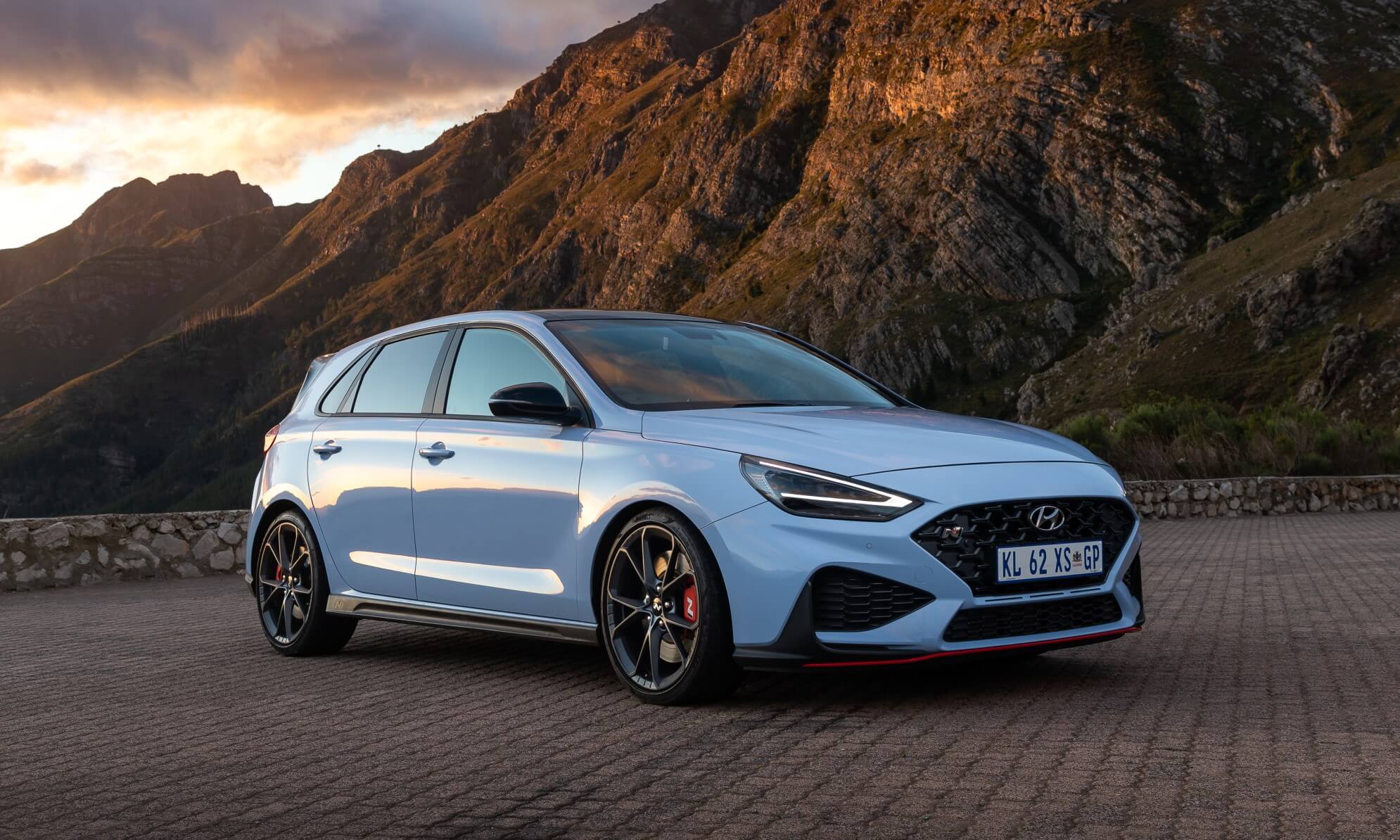
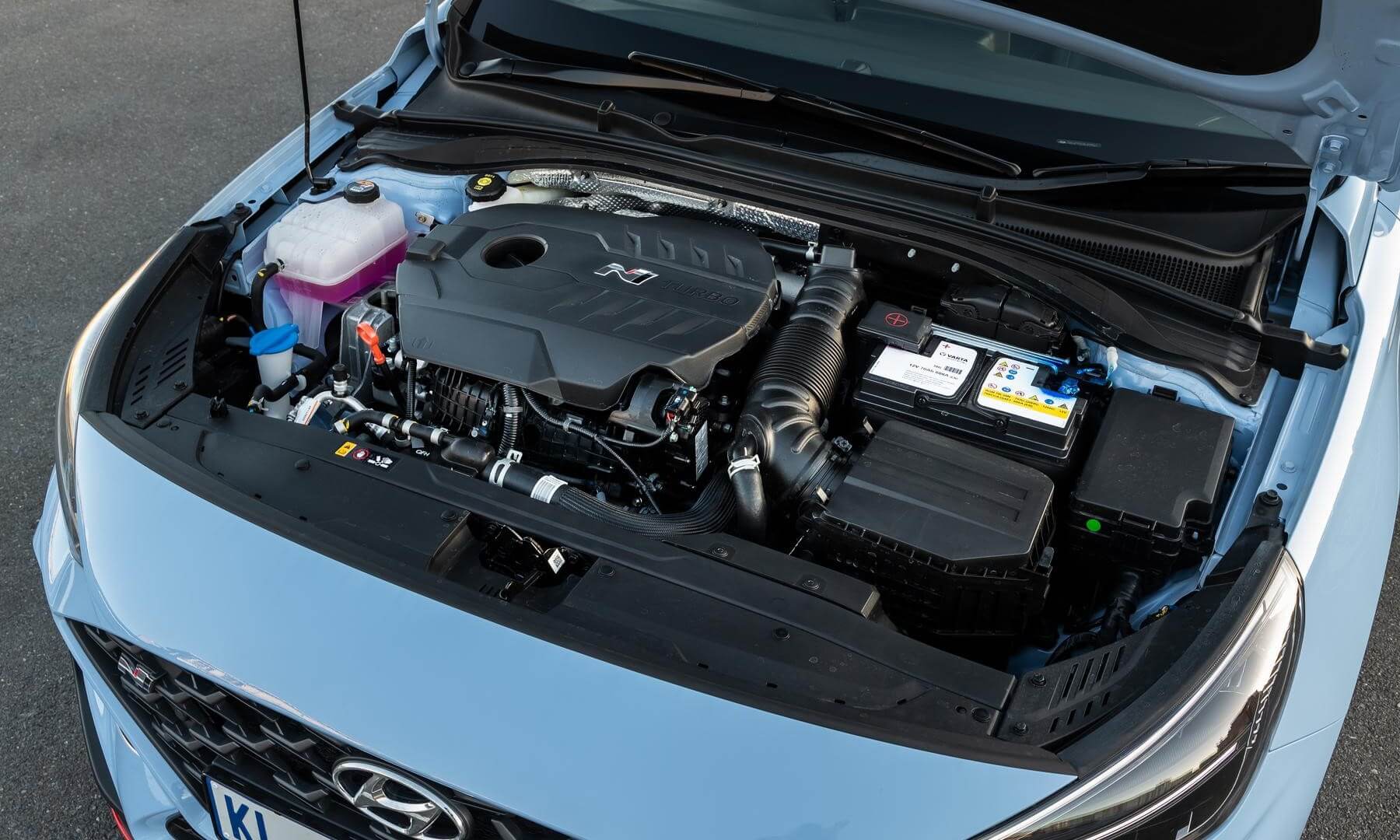

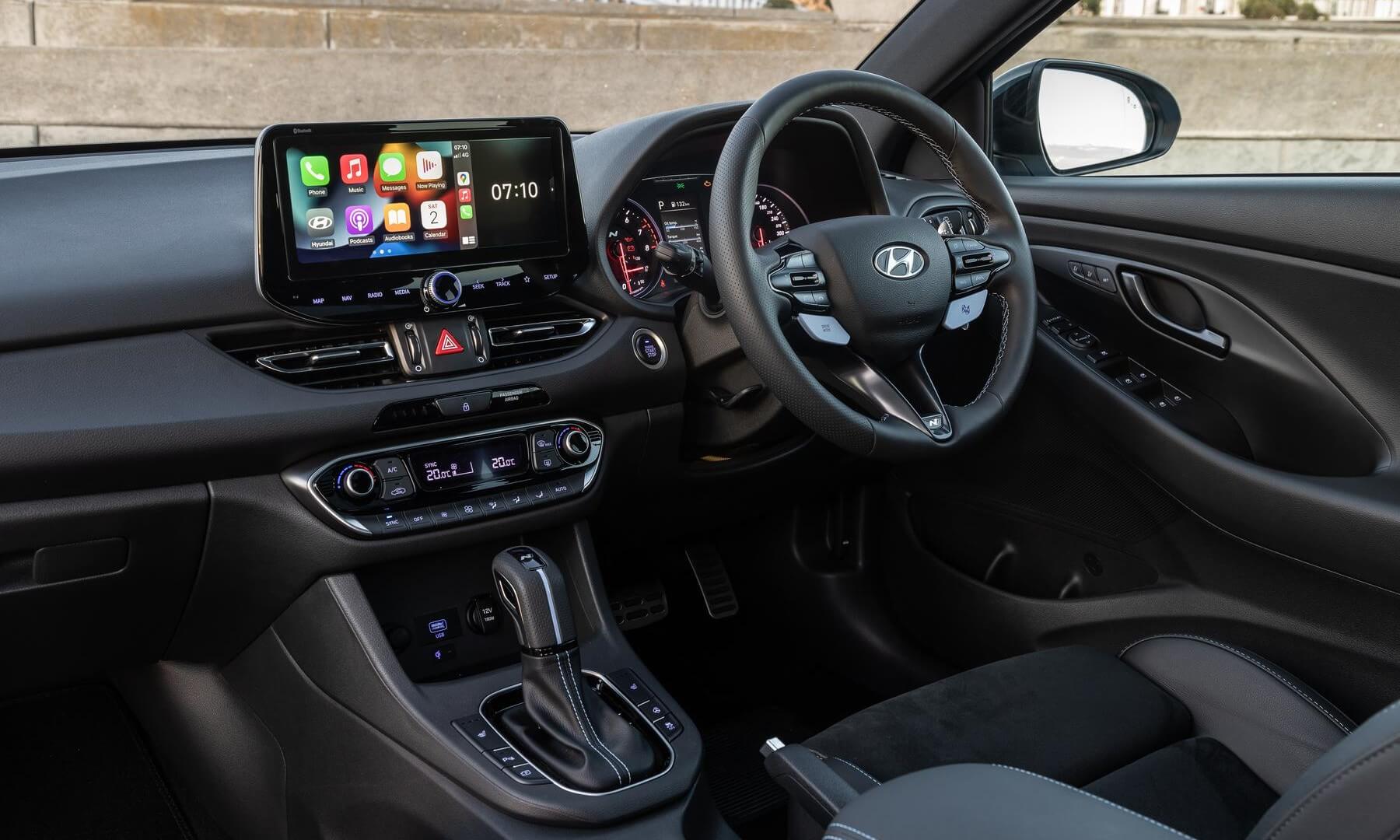
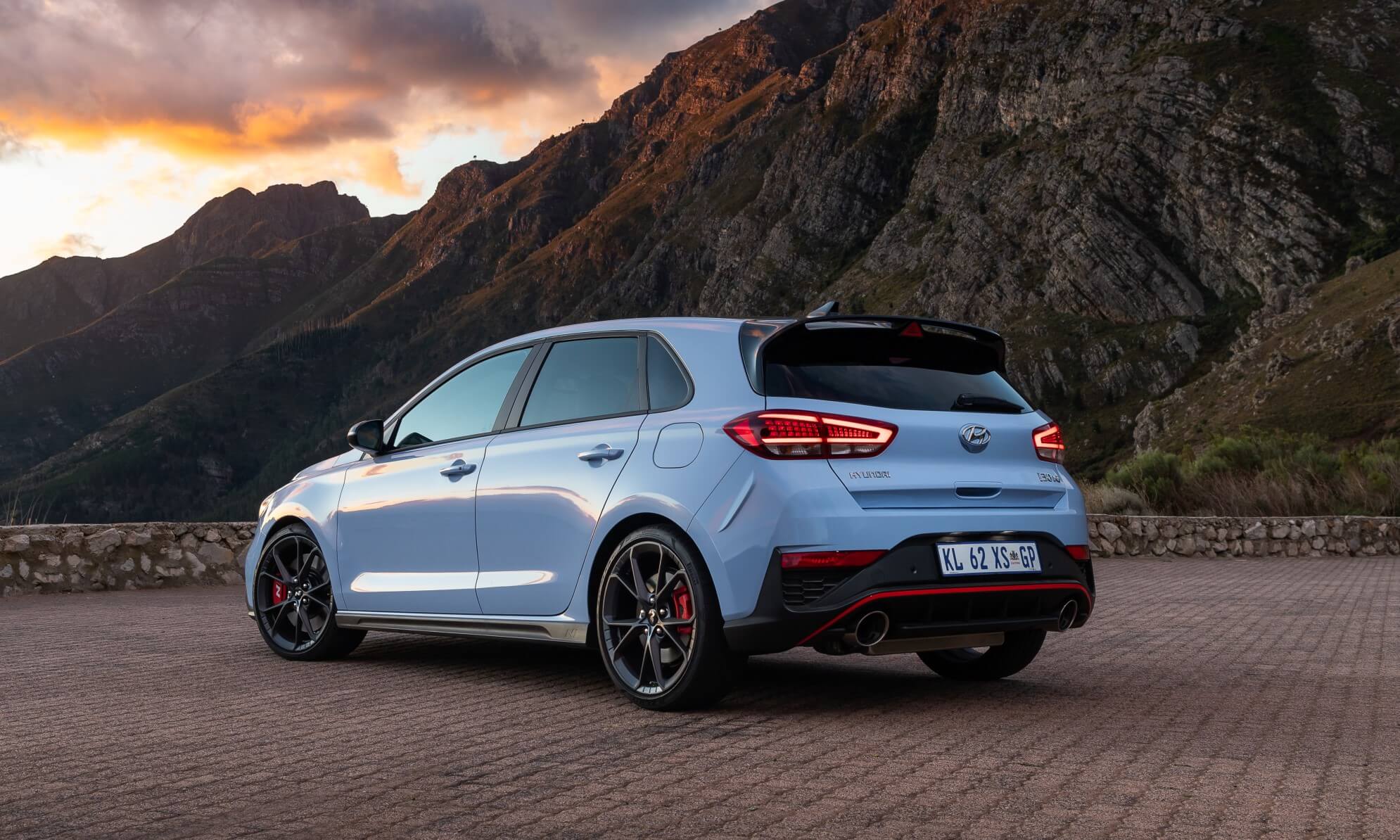
![Keiichi Tsuchiya Drifts Hyundai Ioniq 5N [video]](https://doubleapex.co.za/wp-content/uploads/2023/09/Keiichi-Tsuchiya-Drifts-Hyundai-Ioniq-5N-500x383.jpeg)
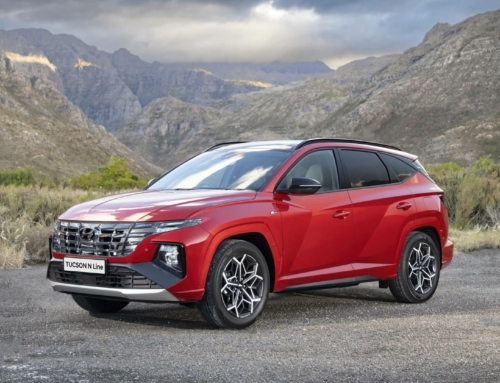

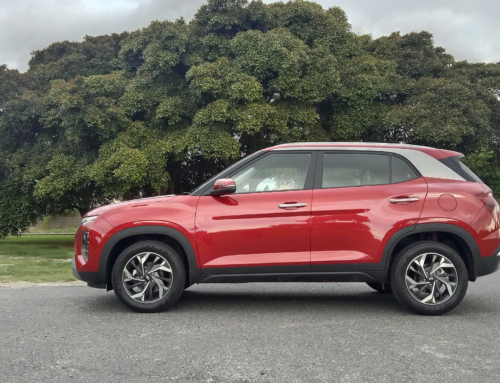
Leave A Comment